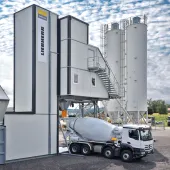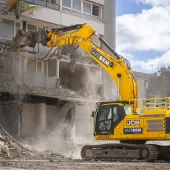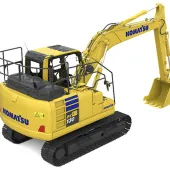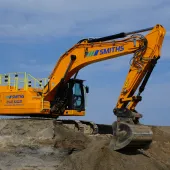Liebherr Litronic Rips And Loads In The Jura
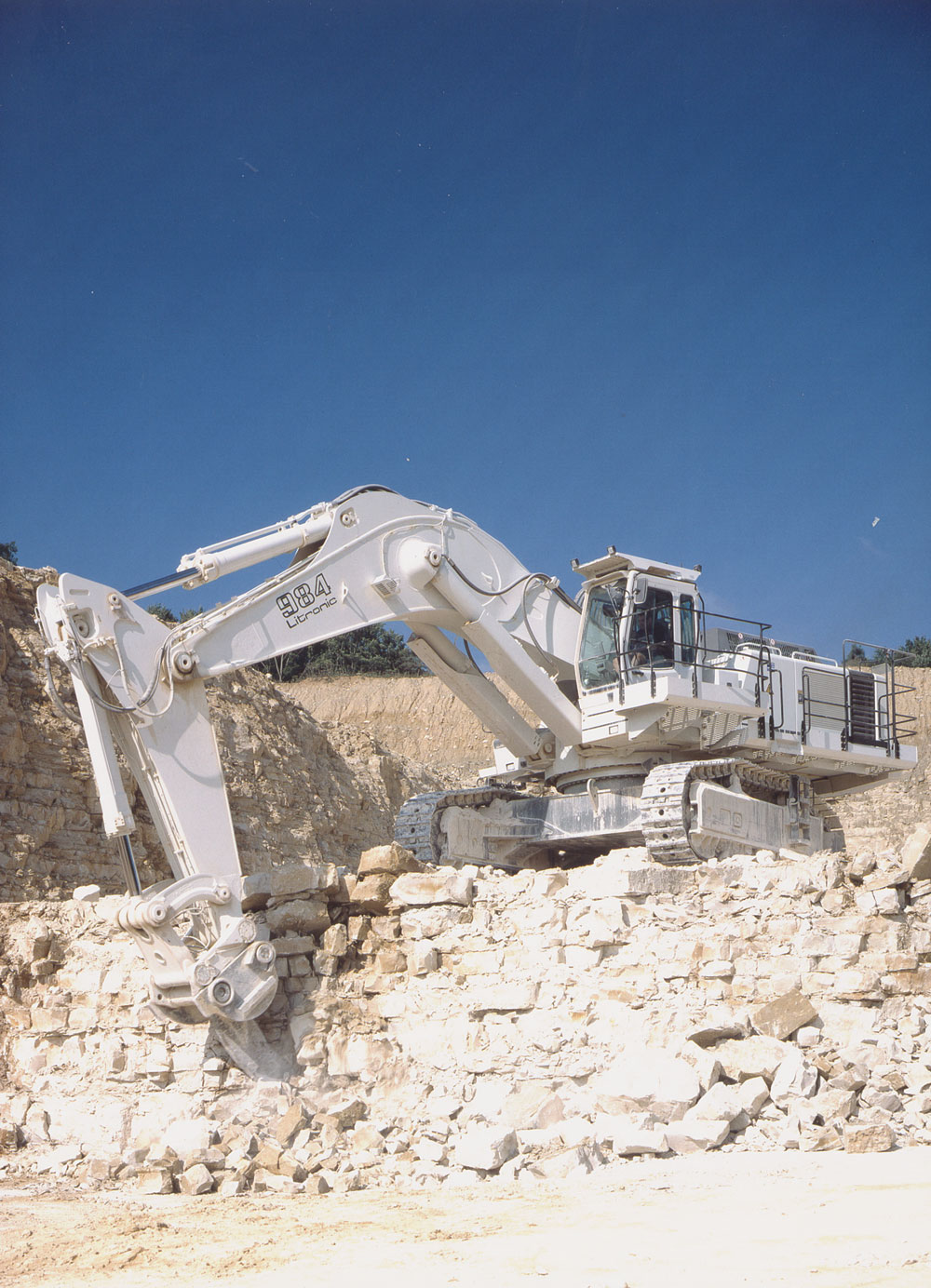
Like many other mineral operations in environmentally sensitive areas, Schleith GmbH’s 2,500 tonnes per day limestone quarry near Eigeltingen, in the southern foothills of the Swabian Jura mountains of Germany, approximately 15km from Lake Constance, has had to find a way of overcoming the problem of uneconomic blasting operations due to strictly enforced environmental regulations.
A Liebherr R991 hydraulic backhoe excavator with an operating weight of 160 tonnes was therefore utilized until mid-1995 to directly mine and load the Jurassic limestone, which outcrops in horizontal layers ranging from 10cm to 80cm in thickness. However, using the excavator bucket to break out the material resulted in the production of a significant number of large boulders which then had to be crushed with a drop ball.
In order to make the overall mining and loading process more efficient and economical, Schleith and Liebherr co-operated with one another to develop an improved technique for ripping and loading the raw material. As a result, a 100-tonne R984B Litronic excavator fitted with a hydraulic quick coupler was introduced to the site in the summer of 1995. This made it possible to use the machine with a ripper tooth as well as a bucket, which helped to reduce the proportion of boulders generated.
In 2002, after seven years’ service and 11,000 operating hours without any appreciable downtime, Schleith decided to replace their proven B-series machine with one of the latest-generation Liebherr hydraulic excavators — the 116-tonne R984C Litronic.
Powered by a 504kW (685hp) Cummins diesel engine which meets all current and future emissions requirements and features a bi-turbocharger and direct fuel injection, the R984C Litronic is equipped with a 7.8m gooseneck boom, a 3.4m dipper and a hydraulically operated, heavy-duty Liebherr QC105 quick coupler.
Depending on requirements, either a 5.2m3 capacity HD bucket or a Liebherr ripper tooth is attached. The digging and breakout forces of the backhoe bucket are 416kN and 550kN, respectively, and 427kN and 565kN for the ripper tooth, while the changeover from the tooth to the bucket takes only a few seconds with the quick coupler actuated by simply pushing a button in the cab.
Whether ripping the stratified rock, loading the trucks, sorting the boulders or reducing their size with a drop ball, the R984C Litronic maintains full stability due to its low centre of gravity and large undercarriage. Protective covers in front of the hoist cylinders as well as armoured glass in the windscreen of the cab provide the requisite level of safety for the operator and machine in this application.
The quarry face at Eigeltingen is divided into a number of 4m high benches — the ideal condition for optimum penetration of the bucket and ripper tooth, as well as utilization of the digging and breakout forces. The rock layers are first broken with the ripper tooth and then, shortly before the arrival of a dumptruck, the changeover to the bucket is made. Each dumptruck is loaded with its 40-tonne payload in five passes in around 2min. After loading, the bucket is changed back to the ripper tooth in about 10s. The rock layers are methodically broken from the top down, with the excavator operator choosing the appropriate spacing of the ripping pattern to produce the aggregate size required.
This extraction technique has greatly reduced the number of unwanted boulders, resulting in only occasional use of the drop ball. Moreover, the number of blasts at the site has been reduced to around 10 a year, and these are solely limited to the removal of the toe area.
Liebherr-France SAS, B.P. 287, F-68005 Colmar/Cedex, France; tel: +33 389 21 30 83; fax: +33 389 21 37 93; website: www.liebherr.com



